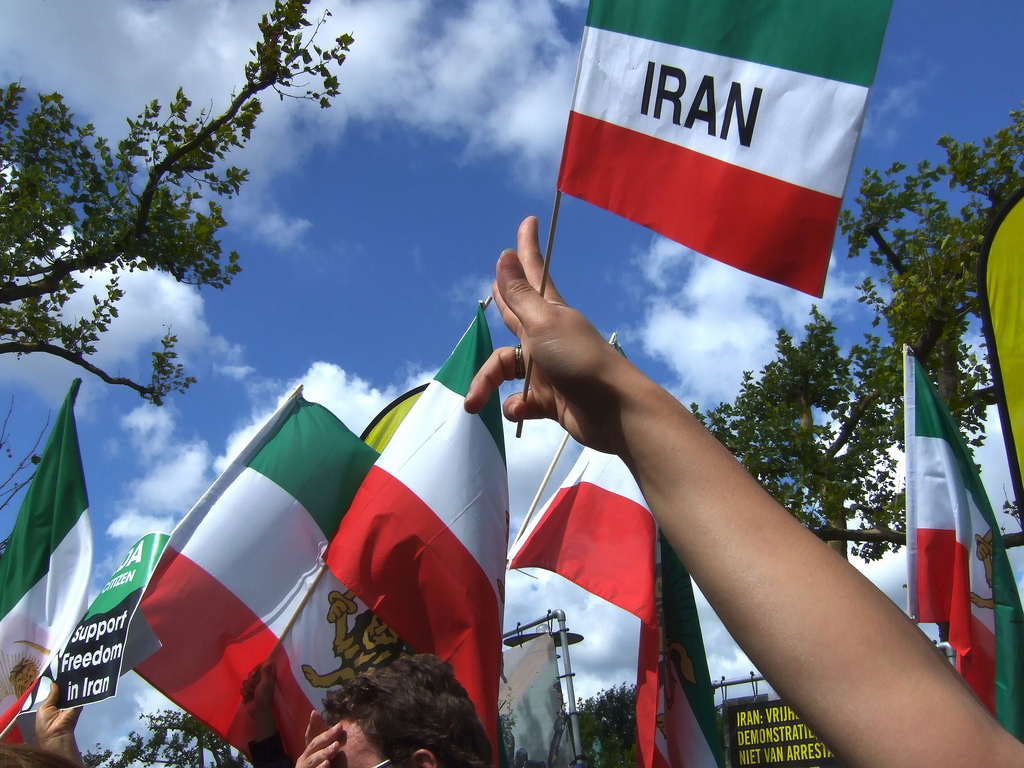When Ayatollah Ruhollah Khomeini returned to Iran after 15 years of exile forty years ago this month, he rode high on the slogan: “Neither East, nor West – but the Islamic Republic!”
Khomeini had alleged for years that the deposed Shah had been a mere pawn of the Western powers, particularly the United States, in Iran and the country would henceforth be independent of both the U.S. and the Soviet Union.
His new regime quickly antagonized the U.S. with the takeover of the American embassy the following November by radicalized young Iranian students and the subsequent taking hostage of American diplomats for 444 days.
U.S.-Iran relations would never be the same again.
Even in those early revolutionary days, however, there were some who feared that making an enemy of the U.S. in such a way would inevitably make Iran more dependent on the East.
Mahmoud Ahmadinejad, Iran’s most controversial president to date, was initially involved in the student ring that seized the embassy but did not participate. His reasoning: “It would boost the Soviets’ influence. The real threat to the revolution is Russia and the Marxists.”
While there were fears throughout the ensuing 1980s that the Soviet Union could capitalize on Iran’s estrangement from the West these were not realized and the Islamist regime maintained a firm grip on power.
Shortly after the end of the vicious eight-year Iran-Iraq War Khomeini declared, in October 1988, that Iran would reconstruct the country without “criminal Soviets and world-devouring America.”
However, he quickly changed his tone with regard to the then-moribund Soviet Union.
In January 1989 he penned a letter to Soviet leader Mikhail Gorbachev warning him of the collapse of Communism and urging him to embrace Islam and not to fall “into the arms of Western capitalism.”
Then in February 1989, the same month he issued the infamous fatwa against novelist Salman Rushdie over his novel The Satanic Verses, Khomeini announced he wanted stronger relations with Moscow against the “devilish” West.
Khomeini’s comment followed a meeting with the Soviet foreign minister. The Iranian leader had declared that month that Iran did not need any relations with the West and favoured Tehran’s continued isolation.
Ultimately, Khomeini died the following summer and the Soviet Union completely collapsed by the end of 1991.
In an interesting departure from Khomeini’s initial revolutionary slogan, the incumbent Supreme Leader of Iran Ayatollah Ali Khamenei proposed last October that the country should tilt eastward and forget about the West altogether.
“We should look East, not West,” Khamenei suggested. “Pinning our hope on the West or Europe would belittle us as we would beg them for favour and they would do nothing.”
Eastern countries, he added, “are taking quick steps on their road to growth.”
His proposal resulted in unprecedented criticism from Iranian Foreign Minister Javad Zarif who called it “meaningless.”
Iran, predictably, has become more reliable on the Eastern powers in recent decades as a result of the near half-century impasse with the U.S. This has done little to benefit the country and its people.
A few recent examples demonstrably prove this.
Last August, Iran signed the Convention on the Legal Status of the Caspian Sea and ceded its 50 percent of that share in return for a paltry 11 percent in return for some vague Russian assurances that it would help Tehran weather new U.S. economic sanctions. This kind of concession is a striking reminder of the days of a weak Iran conceding its natural resources or territory, the most infamous case being the 1828 Treaty of Torkamanchay, for assurances from the imperial powers, in Iran’s case in the 19th and early 20th century were Russia and the British Empire, of the day.
More generally, neither Russia nor China, who have had their own opposition to many U.S. policies in the Middle East in recent years, have ever used their veto power to prevent new U.S. sanctions from being levelled against Tehran over its nuclear program.
Ironically, younger Iranians today consume Western pop culture and are quite cosmopolitan. In the pre-revolutionary years, intellectuals railed against what they called “Gharbzadegi” or Westoxification. This term referred to the mass influx of European technology that had the effect of devastating traditional Iranian handicraft, thus making the country more dependent and less productive.
Such terms gained traction in the 1960s and 1970s when the Shah sought to transform Iran into a modern and prosperous nation, with all the trappings of the West with the conspicuous absence of democracy, in a short space of time.
The concept of Gharbzadegi was promulgated by Khomeini and the revolutionaries in Iran’s drive for self-sufficiency from the West in the post-revolutionary era. The country has had mixed results at best. Today’s Iran, for example, is still heavily reliant on its ability to export its oil to generate revenue and relies heavily on China for this.
In another twist of irony today some Iranians feel that their country, which, like the rest of the world, is not immune from the mass influx of cheap Chinese goods, is now being subjected to “Sharqzadegi” or Eastoxification.
The fortieth anniversary of the victory of the Iranian Revolution is as good a time as any as to ponder Iran’s uncertain future. The East or West question will likely be a recurring one. Ultimately, Iran’s fate may be somewhere in the middle.
Photo: Marjolein Katsma

